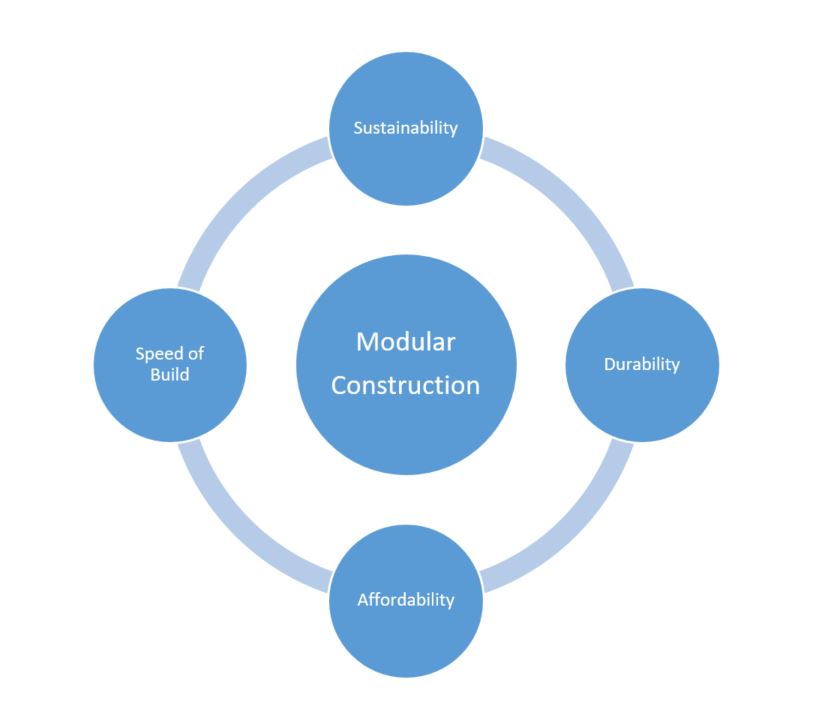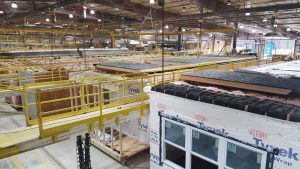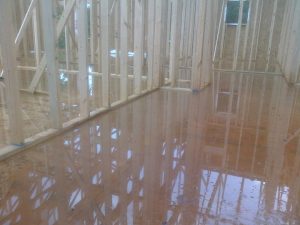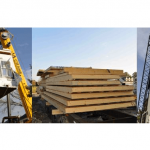Modular Gives Homebuyers Exactly What They are Looking for in a Home


Home sales today are off the charts. Interest rates are now at historic lows! Realtors and home builders are all busy. Homebuyers are doing their research and looking at homes on the internet. Four items seem to be at the top of the search list for those investigating building their new home. They are sustainability, durability, affordability, and the timeframe for construction. The internet is a great tool to do home construction research. What many are discovering is that modular construction is at the top of the list in each category. But what is modular construction, and how is it better? Many confuse modular construction with the terms of mobile or manufactured homes. Even the internet can offer confusing information on this topic. Let’s discuss what modular construction means for these four topics that are so important to homebuyers!
Is Modular Construction Sustainable Construction?
When it comes to sustainable construction, many talk about it and its importance in home building, but few know what it really means. At its highest level, sustainable construction is green construction. But it goes much deeper than that. It encompasses the home site, the design of the home that is built, how the home is built, the materials that are used to build the home, and the way the home will be maintained for years to come.
 In so many ways, modular construction is sustainable construction. Offsite modular construction is actually manufacturing. The industry has turned a substantial amount of a home build into a manufacturing process. A manufacturing process starts with a design and a specification and converts raw materials into the required product. Manufacturing is efficient; it eliminates waste and builds in quality through inspection and repetition. The mantra of factory production is to reduce, reuse, recycle. Instead of trades and workers showing up individually to a custom home site for months in trucks, workers come to one factory to build hundreds of homes. Mostly completed homes modules leave the factory to be assembled on a home site for quick completion.
In so many ways, modular construction is sustainable construction. Offsite modular construction is actually manufacturing. The industry has turned a substantial amount of a home build into a manufacturing process. A manufacturing process starts with a design and a specification and converts raw materials into the required product. Manufacturing is efficient; it eliminates waste and builds in quality through inspection and repetition. The mantra of factory production is to reduce, reuse, recycle. Instead of trades and workers showing up individually to a custom home site for months in trucks, workers come to one factory to build hundreds of homes. Mostly completed homes modules leave the factory to be assembled on a home site for quick completion.
Is Modular Construction Durable Construction?
Durability goes by many names in home construction. Resiliency is another term that is commonly used. Wikipedia defines resilience as the ability to respond, absorb, and adapt to, as well as recover in a disruptive event. A resilient structure is expected to be able to resist an extreme event with minimal damages and functionality disruptions during the event; after the event, it should be able to rapidly recover its functionality similar to or even better than the pre-event level. High-performance construction also falls under this category.
A modular home is just that, a typical home design that is efficiently designed to be divided into modules, built in a factory, and delivered to a home site for assembly. Because the modules are assembled in LEGO-like fashion and attached with straps, lag bolts, brackets, etc. the home is inherently stronger than your typical home built on site. Modular homes weather storms better than most. Because of factory precision, the thermal envelope of each module is tight. Energy efficiency and reduced energy bills are hallmarks of modular homes.
Is Modular Construction Affordable Construction?
There are many definitions of affordable when it comes to construction. The federal government’s definition of affordable is when housing costs consume no more than 30 percent of a household’s income. That is getting hard to do in many parts of the country. Attainable or achievable housing are the terms being used in areas of extremely high costs. In any case, across the country, homes prices continue to rise. The cost of materials to build new homes is forever increasing. According to the National Association of Home Builders (NAHB), government regulations add 24.3% to the cost of the average single-family home.
RELATED: All Paths Lead to Modular
A big part of modular construction is efficiency. Waste is reduced in the construction of a home. Have you ever driven by a home site where a new home is being built? Did you see that 30 cubic yard dumpster outside of it that was full wood and waste? Per the NAHB, construction of the average 2,000 sq ft new home produces 8,000 pounds of waste. You not only pay for the dumpster and its dumping but for all of the materials that went into it! Modular construction attempts to eliminate many of the inefficiencies of onsite construction and introduces the huge efficiencies of manufacturing into the home construction process. Homes produced using modular construction are produced at a better value for the home buyers. However, a fallacy of modular construction is that you can save 50% over a home built on site. That isn’t true and many who hear that are confusing modular construction with lower cost/lower spec, mobile or manufactured homes that are built specifically for the affordable housing market.
Is Modular Construction Faster Construction?
The NAHB says it takes an average of seven months to build the typical single-family home. The process of finding contractors and subcontractors today is difficult. The home building business is booming, and even with today’s higher unemployment numbers, there is a labor shortage in construction. The skilled labor just doesn’t exist for the industry and the industry struggles to meet its labor needs. When this happens, job completion can take even longer. In addition, outside construction means homes are susceptible to the weather. Not just for project delays but for water getting trapped inside the home.

Site Built Homes Are Exposed During the Construction Process
Modular construction means a home’s modules are built indoors. Because they are built away from the job site, they can be constructed at the exact same time that excavation and foundation work is being done at the home site. Typically within a day, modules that are delivered to the home site are assembled on the foundation and under roof. The interior of the home has been completely protected from the weather during the entire process. Because modules are more complete, trades have a much-reduced scope once the modules arrive. With tight project management, a home can be completed onsite in as little as 4-6 weeks after installation. The entire process can be completed in 3-4 months, cutting 30-50% of the timeframe out of a typical single-family home build!
Modular Construction Checks all of the Boxes for Today’s Home Buyers!
Modular construction hits the top four things that homebuyers are searching for: sustainability, durability, affordability, and a reduced timeframe to build. Production homes are built as cheaply as they can be. For many on-site builders they build to the lowest standard allowed by law. Offsite modular construction has to be built better to withstand delivery to the job site. Not only are these four items important to home buyers, but they are also critical to constructing today’s modern homes. When it comes to delivering the complete package for building today’s home for today’s homebuyer, modular checks every box!
The post Modular Gives Homebuyers Exactly What They are Looking for in a Home appeared first on Impresa Modular.




